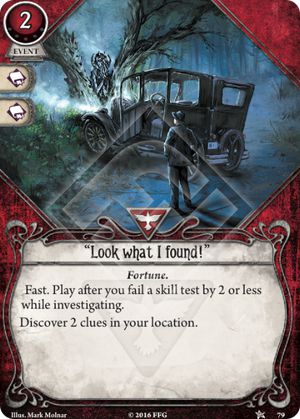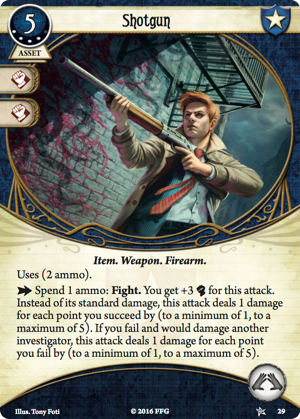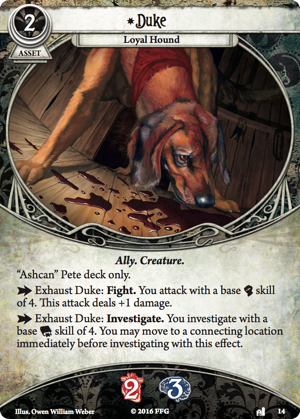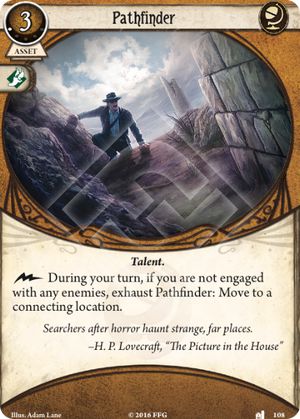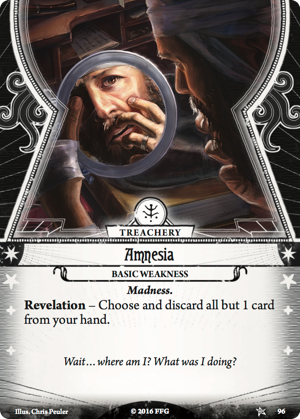Hello Dear Readers! After the Easter break we’re going back
to business. Fantasy Flight Games doesn’t give me too much of a breathing room,
releasing Mythos Pack very quickly. I have very little time to test new cards,
not to mention writing posts about something different than the newly expanded
card pool.
This time we got the highly awaited permanent talents. You
can read some general points about them in one of my previous posts. Now,
however, we put our fingers on all of them and could finally see how they work
in a real game, not only theorize about them.
Designers have created five very distinct talents, each
granting bonus in a unique way. They also seem to follow a pattern – each
boosts two skills, one of which can also be boosted by the non-permanent Talent
of the same class. Talents differ greatly in strength and character. Some of them
are more situational, some more consistent etc. Based on my observations, I
have made the following ranking (from the strongest to the weakest).
Guardian card has won the competition by a very small
margin. It has couple of advantages, all adding together to a great combined
effect.
First of all, it boosts a great pair of skills. Combat and
Intellect are the most commonly tested skills, so increasing them comes in very
handy. It’s also worth noting, Combat is the most important skill from the
perspective of a Guardian character, and therefore investing in Keen Eye allows
us to free a spot in the deck by dodging Physical Training.
Secondly, it has a great cost-benefit ratio, provided we can
cleverly plan for it. It boosts consecutive skill checks, helping to deal with
a problematic enemy or a nasty location.
Both Guardians should be able to reap the benefit of the
card. While Roland usually investigates bit more, Zoey has more resources to be
able to pay the activation cost.
It is another very strong talent, almost on par with Keen
Eye. Its most obvious strength is the cost-benefit ratio – a boost of two for a
mere one resource.
It is not the end of its advantages, though. One must also
notice a great choice for the skill pair it increases. Each Seeker is more
interested in one skill of the pair. Daisy will be very happy to find a way to
reliable boost her Will for spellcasting. We can expect more spells-heavy
builds for her to arrive soon. Rex, having a very strong way to boost his
Intellect in order to keep investigating at 2+, might finally be free to look
for alternative builds to the Scavenging-based. Maybe also a Spell-based one? I
would personally try to give him Leo, to investigate even more times per turn.
Another card coming to my mind is Opportunist – not only nicely fitting the
idea of passing by 2 or more, but also staying in your hand, ensuring Higher
Education will be usable.
Higher education is a very thematic card, too. Seekers are
naturally inclined to card-drawing; hence a hand full of cards sounds like an
interesting requirement. Not to find yourself unable to activate its ability,
you should not only plan ahead during the game (spending an action on getting
an extra card, if needed, or waiting with playing particular assets), but also
stock on card-drawing cards.
Survivor card starts the list of “Tier 2” talents. It
follows the pattern of the talent cards from the core set as it boosts the
skill by one per each resource spent. In fact, if not for the permanent keyword,
it is an exact copy of Hard Knocks.
Obviously, just starting in play (and therefore saving deck
space, actions, cost and reducing the luck-dependency) is quite an advantage.
Still the card does not provide the extraordinary effectiveness of blue or
orange talent cards. The skill pair isn’t too useful, neither. While Wendy can
put Agility bonus to a good use, the Combat part is less satisfying. Arguably
Pete could use either Will (since he already starts with Will of 4 and
therefore uses spells quite often) or Lore much more, while for Wendy it’s
almost useless. It leads to some suboptimal deck choices, or ditching Scrapper altogether
(and Survivors are already low on high level cards to take).
Furthermore, I cannot understand why Agility is chosen to be
featured in a green talent again. With the exception of Backstab and a very
rare evasion, Rogues do not use it too frequently (in my games at least). Intellect
boost was highly anticipated, though, and plays just perfectly. While Rogues
have mediocre Intellect, they’ve had no means of helping with the investigation
so far. This is the first reliable boost, albeit an expensive one.
Streetwise is obviously stronger for Jenny, who has
abundance of resources, than Skidds. But even with him you can pull the talent
off, if you pair it with Hot Streak or two.
I was initially very excited about this card. A huge boost
at a 0 resource cost helps the costly Mystic decks. I also like the thematic
side of the card. However, adding a doom token is a steep price. There are few
scenarios, when you’d be willing to do it.
The first one is obvious – just before Agenda advances, as it doesn’t speed up to malevolent plot at all. This might very rare, though, depending on the scenario and not always timed well with your needs. You could try to do it one turn earlier and use the skill 3 times. You could also use it if failing test would mean too much of damage. Lastly, in scenarios, which pose biggest challenge due to other constraints (tough tests, Behind the Veil etc.) and not particularly the doom-enforced time limit.
The first one is obvious – just before Agenda advances, as it doesn’t speed up to malevolent plot at all. This might very rare, though, depending on the scenario and not always timed well with your needs. You could try to do it one turn earlier and use the skill 3 times. You could also use it if failing test would mean too much of damage. Lastly, in scenarios, which pose biggest challenge due to other constraints (tough tests, Behind the Veil etc.) and not particularly the doom-enforced time limit.
Unfortunately, all of those circumstances are rather rare,
making the card extremely situational. Moreover, even though Combat boost is useful
(opening brand new possibilities for both Agnes and Jim), Agnes’ Will is already
very high and a whopping +3 bonus won’t be probably worth a doom token.
Maybe we’ll see some cards manipulating the doom tokens on
the assets (or providing more benefits for having them, like Marie’s special
ability). Until then Blood Pact is rather underpowered.
The talent cards are the highlight of the expansion.
However, there are six more cards in the expansion, some of them very useful. Let’s
review them in the usual class order.
Prepared for the Worst is yet another strong Guardian card.
Guardians definitely hit the jackpot this time. It has multiple benefits over including a level 0 weapon. First off all, once
you start exchanging weapons for the stronger variants, you can use it to find
the stronger one, effectively adding more copies of costly, high level cards
(like Switchblade or Shotgun) at cost of 0 XP.
Furthermore, it allows you to include only the exact cards
you find most useful – if you prefer Machete, you don’t need to stock on .45 Automatics just to have redundancy and vice versa.
Finally, it is much more effective, if drawn once you
already have a weapon. It features 2 handy icons (compare with the Agility icon
of .45…). The only drawback compared to just putting an additional weapon to
your deck is the cost of 1 resource and an action (obviously you might also get
super-unlucky and not find any weapon within first 9 cards, but this is highly
unlikely).
I like Preposterous Sketches, too (it seems we’re getting quite
some strong cards in this expansion, huh?). So far a card allowing you to draw
another three was only available for a hefty price of 4 experience points.
Obviously there are many advantages of Cryptic Research over the newly released card. It is fast, not only costing 0 actions, but also freely playable when engaged with an enemy. It can be used on another investigator. It does not costs any resources and does not have any requirements to play.1 The last two are trivial, as clues are common and Seekers usually have many resources.
Obviously there are many advantages of Cryptic Research over the newly released card. It is fast, not only costing 0 actions, but also freely playable when engaged with an enemy. It can be used on another investigator. It does not costs any resources and does not have any requirements to play.1 The last two are trivial, as clues are common and Seekers usually have many resources.
On top of obvious advantages it also provides good synergy
with the Higher Education featured in the very same expansion.2
All in all, Preposterous Sketches are very close to the power of a
solid 4 level card, so it would be foolish to consider it anything but a great
card.
Rogues expand further on their resource theme with Lone
Wolf. Please note the timing of the card – it is enough to start the turn alone
to gain the benefits, hence you can also use it in a team with a bit of
planning (though it obviously absolutely shines in a solo game). It is yet
another solid card, building a strong economy and providing very quick return
on investment. Unlike Burglary, it doesn’t require you to spend any further
actions on it, it’s enough to just keep it in play (and keep to yourself).
While Assets seem to provide the strongest changes to
strategy (due to their lasting effects on the game) and you can’t reliably plan
the deck strategy on the event/skill cards, they are the much needed icing on
the cake and too often get overlooked/underrated. I am glad the designers keep
coming with more of them (particularly skills).
The first one is a Mystic card – Defiance. It builds up on
the Mystic theme of manipulating the symbol tokens. It is partially a
situational card, as the nastiness of a symbol token varies strongly between
scenarios (and even within them), which is partially compensated by the Wild
icon on it.
It is hardly an auto-include. Unfortunately to assess its strength you need to know if you get more tokens during the campaign (effectively doubling, or even tripling the chance the effect of the skill will trigger), while due to level 0 it makes most sense to put it in the beginning of the journey.
It is hardly an auto-include. Unfortunately to assess its strength you need to know if you get more tokens during the campaign (effectively doubling, or even tripling the chance the effect of the skill will trigger), while due to level 0 it makes most sense to put it in the beginning of the journey.
Survivor skill is even more situational. Being at -2 at the beginning
of the skill check is rather a rare occurrence. And even than the card itself
by no means guarantees a success. I would much rather include it in the deck,
only if I know how it will be used.
I believe it will be used for fighting by both Survivor characters and Agnes, since an Enemy with 4 strength is already tough enough and they all can use Fire Axe to boost their chances further. Similarly Pete/Agnes can include it, if they anticipate investigating a Shroud 4 location.
I believe it will be used for fighting by both Survivor characters and Agnes, since an Enemy with 4 strength is already tough enough and they all can use Fire Axe to boost their chances further. Similarly Pete/Agnes can include it, if they anticipate investigating a Shroud 4 location.
I am not entirely sure about the card's interaction with Double or Nothing. If it does work as I'd imagine, though (meaning - you can commit Rise to the occasion, if the doubled difficulty is higher by 2 than your skill), it crates a powerful synergy.
I very much like the thematic side of the card. After all, Survivor
archetype reflects an ordinary person faced against terror of the Mythos world,
prevailing only due to their resilience, resourcefulness in face of the threat
and luck. Thus despite being ordinary and unexceptional they use some inner
drive to deal with the challenge.
The new upgraded Emergency Cache does not invoke any strong
emotions in me. It is a nice choice for investigators that need more cards
(Wendy, Pete, Seekers with the talent, maybe Agnes, as she relies on drawing
the assets) or a good pick if you don’t want to ditch any of your cards but
want an improvement.
What are your favorite cards? Have you found some
interesting interactions? I’m looking forward to hearing your feedback!
All images are courtesy of cardgamedb.com and fantasyflightgames.com
1 Technically speaking, Cryptic Research has the drawback of
having no icons, however playing it allows you to get more icons to use at 0
cost.
2 Maybe the education the talent refers to is an Art School?
Would also fit with the Art Student card, huh?













